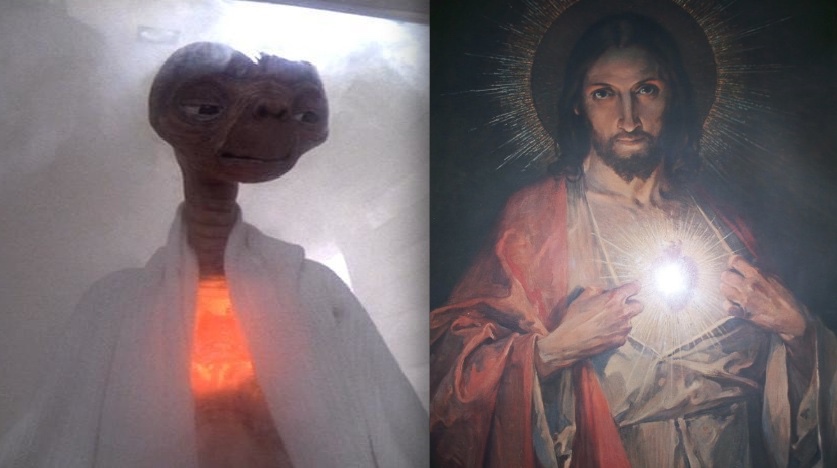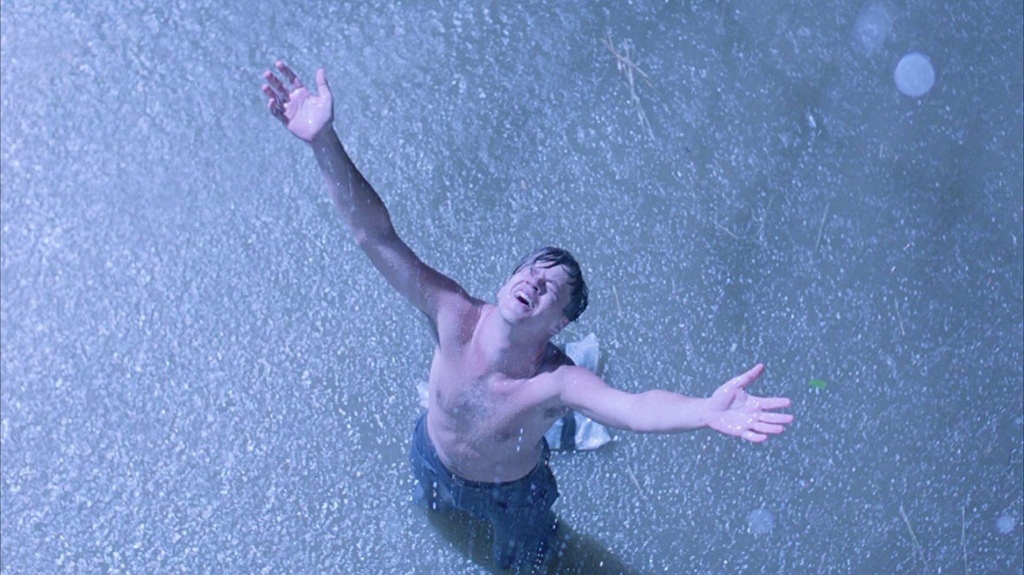Originally published in January 2018
As we all often tend to do over the Christmas period, we get to kick back and relax on the couch with a seemingly endless flurry of popular films to divulge ourselves into. Being something of a movie-buff, my old educational qualification in Media Studies and English had me watching away when it hit me: ‘Does religion play a strong underlying role in popular media?’
I wrote previously about how hidden political statements are often made in fiction. In that article, we looked at how even the likes of Godzilla reflected the international relationships between the governments of the USA and Japan. Anon, me thought, let’s see if religion does the same with a specific focus on ET: The Extra Terrestrial and The Shawshank Redemption.
Starting with ET, it might be considered laughable at first to think that a wee alien creature who befriends a young boy could be anything more than a nice little piece of science-fiction. As some people like me tend to do however, there was time to read between the lines – and maybe overanalyze some might say – so see what you think. Spoiler alerts ahead, by the way.
The underlying religious themes of ET are found when you look closely into his connections with the stories of Jesus Christ. Most other alien-based movies of this time dealt with ray guns, battles in galaxies far, far away or in the case of ‘Alien’, a most gruesome looking birth scene you could ever wish to see. ET bucks the trend of this stereotype.

His behaviour in some scenes give rise to the theory that he is on earth purely to study plant life and nature. This can be seen as early as the opening scene as he caresses and smells greenery with a sense of happiness and contentment. It’s shown again later in a very simple and basic scene where he brings a plant back to life through his telekinetic powers.
Some people have suggested that these actions mirror the paintings of Christ that show him being at one with nature where he is immensely immersed in what he sees as God’s most wonderful creation – the Earth. The connection goes further as the filming progresses. When ET rises from the dead – connection made – he is shown wearing a shroud as his heart glows.
Almost every home in Ireland would have pictures of Our Lord displayed on the walls of hallways or kitchens posing in the very same manner. During the narrative, we also notice that the creature has the ability to heal pain and this is demonstrated when he cures the cut on Elliot’s finger by touching it with his own.
Another part of this famous film shows ET being treated by medical experts who are trying to resuscitate him as he slips away from life. The time of death is audibly heard as “15:36.” This sprang me to nosey if this was a Bible passage of some relevance. The quote I found was “What you sow cannot come back to life!” Perhaps this is a metaphor both plants and death.
Director Steven Spielberg vehemently denies any Christian theme to the film but that doesn’t stop us from being allowed to interpret it anyway we choose.
Spielberg himself is Jewish but that hasn’t stopped other theorists from looking closer at the ‘Bike Scene’ where the fleeing boys try to outrun the authorities by purposely ‘crossing the desert’ as they veer off-road.
His ascension into the sky at the film’s end is another possible link and we should not forget of course what his two most important messages to Gertie and Elliot were.
He reminded Gertie (and us) to “Be Good” and similarly to Elliot (and us again) that “I’ll Be Right Here” as he literally touches his heart.

Moving onto The Shawshank Redemption. Based on the novel by Stephen King, this story changed his reputation as being purely a writer of horror-based fiction. On the surface, it’s your basic prison movie with an almost all-male staff and themes of hope and freedom running along with the storyline.
Delving a little deeper however, that there is no real representation of God in this film, so in his absence, the audience are given what is known as a perverse deity; a devil-like character who is disguised as a holy figure.

This character is portrayed by the warden who repeatedly makes biblical quotations as well as using a stitch-work about judgement (that his wife made at church group, remember?) as a cover to the safe where he keeps records of his illegal financial dealings. Yet this connection cannot be made fully unless reference is given to the essay ‘Existentialism is a Humanism’ by Jean Paul Sartre.
In this written piece, Sartre argued that in the absence of God, humans must define their essence themselves through the choices they make. In the prison, the inmates aren’t allowed to define their own essence and this is echoed by the lines: “You eat when we say you eat!” and “Forty years I’ve been asking permission to piss.”

In a nutshell, the walls come to define who they are. First they hate them and then have to get used to them, so much so that Brooks becomes institutionalised and chooses not to live anymore. In the same essay, Sartre compared humanity to rocks in that rocks are shaped and defined by something else whereas we see Andy choosing to shape and polish rocks in a way that he wants.
This of course wasn’t the only time King would use religion in his works. A few years later, The Green Mile held much more obvious forms of Christianity and used the prison setting here as a metaphor for purgatory. Here Tom Hanks’ character often questions the morality and what judgement he will face before God when dealing with John Coffey’s impending execution (note the use of initials.)
Maybe I’m overthinking but sure interpretation is something we’re allowed to do.